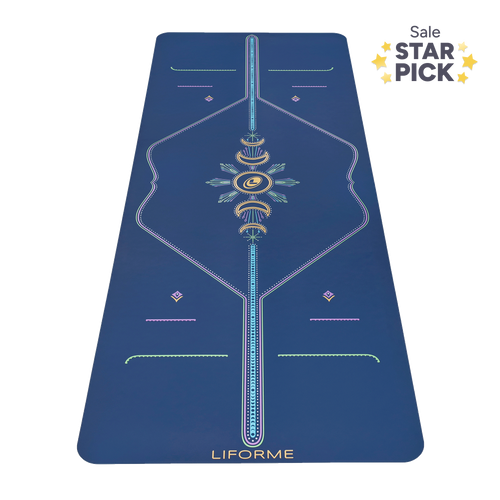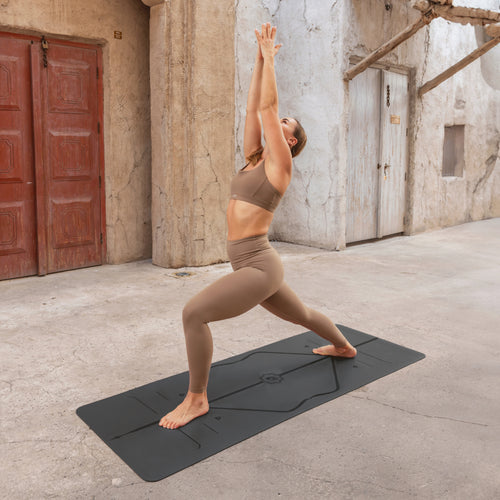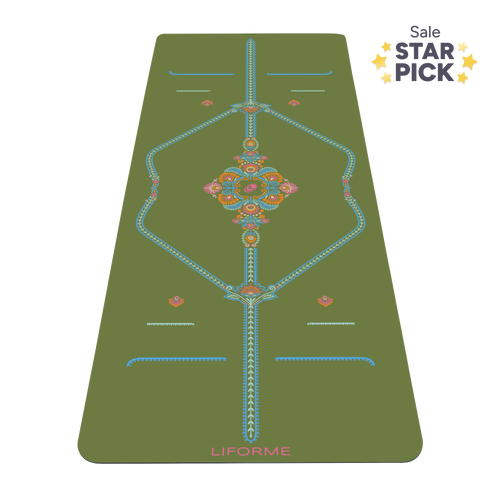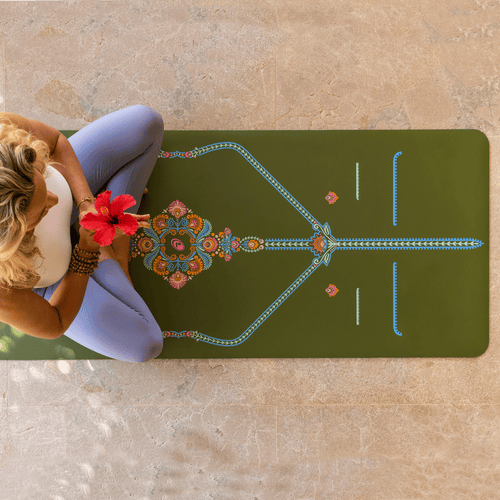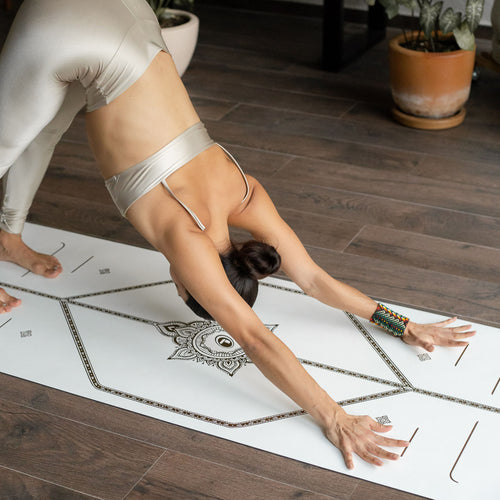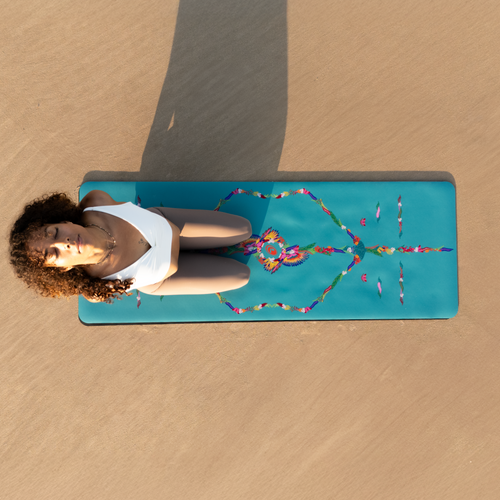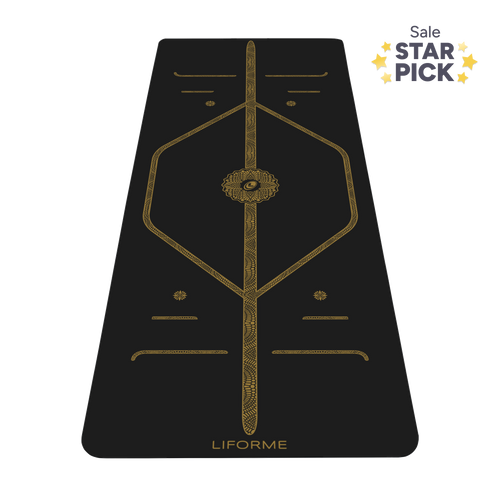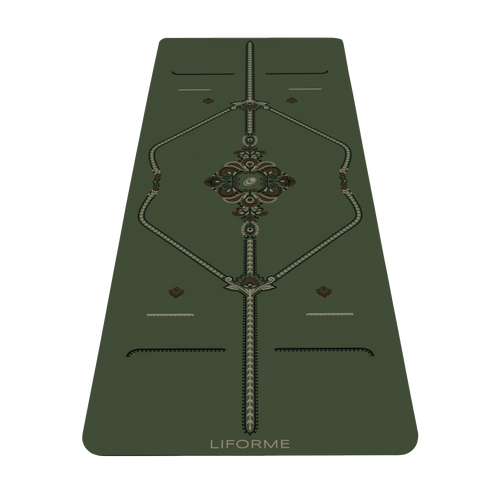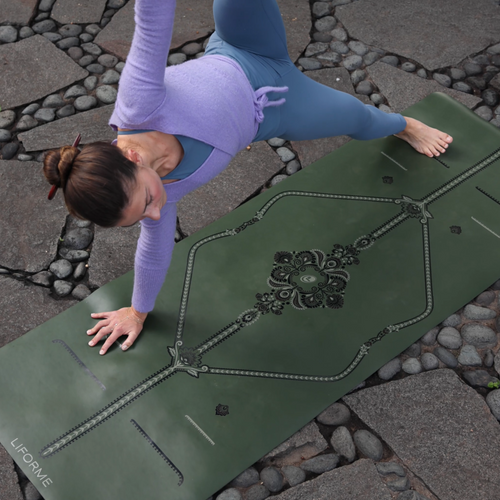Cow Pose has a co-starring role in one of yoga’s favourite moves, the Cat-Cow Stretch, but it can also stand on its own. When you’ve been sitting all day, nothing feels better than to open your chest and move your spine.
Step-by-Step Instructions for Cow Pose
1. Begin on your hands and knees with your thighs and arms perpendicular to the floor and your spine in a neutral position. Take a Yoga Pad under your knees if they are sensitive.
2. On an inhalation of breath, initiate movement from your tailbone by tilting your pelvis forward.
3. Keep light engagement of your core as your belly lowers by drawing your navel toward your spine.
4. Let the effects of spinal extension (also known as a backbend) ripple up your back.
5. Open your chest and tilt your head back slightly to lift your gaze.
6. You may be accustomed to moving into Cat Pose on your exhalation. Instead, spend a few breaths in Cow Pose as you continue to open your heart.
Cow Pose Basics
Sanskrit Meaning: Bitila (Cow) Asana (Pose)
Yoga Level: Beginner
Pose Type: Kneeling
Benefits of Cow Pose
· Opens your chest
· Counters the effects of sitting
· Improves spinal mobility
· Improves core strength
Key Alignment Cues
1. Stack your joints
Pelvis over knees and shoulders over wrists for the greatest stability.
2. Draw in your navel
Your belly is dropped, but it’s not hanging loose. Draw your navel gently toward your spine to engage your abdomen and support your spine.
3. Lift your gaze
Think of your neck as the natural extension of your spine. Tilt your head back slightly to lift your gaze, but don’t overdo it.

Beginner Tips for Cow Pose
· Don’t worry if you don’t feel like you’re getting big movement from this pose. Mobility will improve over time.
· If you can’t come to your hands and knees for any reason, you can do Cow Pose in a chair (see below).
Variation of Cow Pose
Chair Cow Pose
1. Come to sit on the edge of a chair with your feet flat on the floor and knees stacked over your ankles.
2. Bring your palms onto your knees.
3. On an inhalation of breath, tip your pelvis forward, puff up your chest, and draw your shoulders back.
4. Return to a neutral position on your exhalation.
5. Repeat on your next inhalation
Preparatory Pose

Sphinx Pose (Salamba Bhujangasna)
This gentle, supported backbend is a good way to warm up the spine.
Counter Pose

Child’s Pose (Balasana)
Round your spine and bring your sit bones to your heels to counter the effects of Cow Pose.
Why We Practice Cow Pose
We practice yoga to bring balance to our bodies, which often means coming into positions that we don’t do in our everyday lives. Cow Pose is excellent for spinal mobility and core engagement, and it’s easy to incorporate into your routine. You can even do it sitting at your desk!
FAQs
What is Cow Pose good for?
Cow Pose is good for opening your chest, which counters the effects of sitting and improves your posture. It’s also a good warm-up for the spine.
Is Cow Pose beginner-friendly?
Very! Almost anyone can do this pose, either on your hands and knees or in a chair.
When should I avoid Cow Pose?
If you experience back pain from arching your spine or your doctor has advised you to avoid this position, give Cow Pose a miss.






